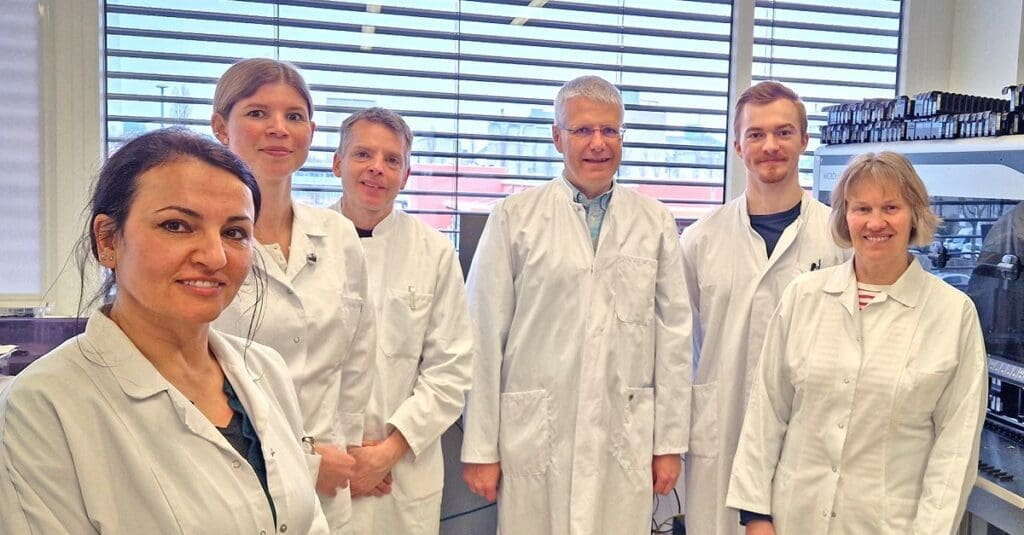Molecular pathogen diagnostics in sepsis: faster for targeted therapy
Every hour counts in sepsis. Metagenomic next-generation sequencing (NGS) enables sensitive detection of potential pathogens directly from cell-free DNA – even during ongoing antibiotic therapy. This means that patients can be treated more quickly and in a more targeted manner, especially if the blood culture is negative.
Sepsis: a challenge for diagnostics
Sepsis is the most severe form of infectious disease and is associated with a mortality rate of around 40% in Germany. Despite modern intensive medical care, the prognosis is still poor. Rapid identification of the causative pathogen is essential for successful anti-infective therapy. But this is precisely where the diagnostic difficulties lie: In up to 70-80% of cases, the pathogen remains unidentified – often due to previous or ongoing antibiotics or germs that are difficult to cultivate.
“The new generation of sepsis diagnostics”
– Dr. med. Konrad Bode, Specialist in Microbiology, Virology and Infection Epidemiology

NGS-based diagnostics: independent of cultural detection
An innovative approach to supplement traditional microbiological diagnostics is the use of next-generation sequencing (NGS) from cell-free DNA. MVZ Labor Dr. Limbach & Kollegen eGbR has established this metagenomic test DISQVERôÛ from Noscendo GmbH for the diagnosis of severe bloodstream infections. The complete DNA is extracted from a patient sample – including bacterial, viral, fungal and parasitic DNA. The human DNA is filtered out bioinformatically.
The CE-certified evaluation is carried out using the DISQVERôÛ pipeline from Noscendo GmbH, which compares the remaining microbial DNA with a reference database of over 16,000 microorganisms, including more than 1,500 relevant pathogens.
Advantages of the process
The method allows hypothesis-free detection of potential pathogens – regardless of whether they can be cultivated or not. Identification is also possible during ongoing antibiotic therapy. Polymicrobial infections can also be detected. The procedure is minimally invasive and is based on the analysis of cell-free DNA from blood or other body fluids.
A decisive advantage lies in the sensitivity: in a cohort of septic patients, the DISQVERôÛ test was able to detect the pathogen in 72% of samples – compared to only 32% using blood culture.
Clinical relevance and indication
The method is particularly suitable for severely ill patients with sepsis, septic shock or culture-negative endocarditis. It is also suitable for complex clinical issues – for example after organ transplants or in immunocompromised patients.
patients – the method provides crucial diagnostic information. One example: in a patient with cerebral aspergillosis, the pathogen was identified solely by detection from cfDNA.
Case studies illustrate the clinical relevance
In several case reports – such as perforated sigmoid diverticulitis or systemic inflammatory response syndrome (SIRS) in children – NGS-based diagnostics enabled targeted therapy to be initiated even though the classic blood culture was negative. This evidence underpins the importance of sequencing as a complementary method in the diagnostic arsenal of modern infection medicine.
Conclusion
NGS-based pathogen diagnostics is a highly effective complement to cultural diagnostics that can significantly improve patient care in time-critical situations such as sepsis or endocarditis diagnosis. Early and comprehensive pathogen identification is the key to effective and differentiated therapy.
For further information on NGS-based diagnostics, please contact us directly:
NGS_Diagnostik@labor-limbach.de
Literature:
1 Goretzki, S. C., SchûÊfer, M., Dogan, B., Bruns, N. et al: Next Generation Sequencing of Free Microbial DNA for Rapid Identification of Pathogens in Critically Ill Children with Systemic Inflammatory Response Syndrome (SIRS). Front Biosci-landmrk, 2022; 27, 302.
2 Ziegler, S., Disquûˋ, C., Grumaz, S., Sakka, S. G.: Potential impact of cell-free DNA blood testing in the diagnosis of sepsis. Int J Infect Dis, 2022; 119, 77-79.
3 Decker, S. O., Sigl, A., Grumaz, C., Stevens, P. et al: New approaches for the detection of invasive fungal diseases in patients following liver transplantation – results of an observational clinical pilot study. Langenbeck’s Archives Surg, 2019; 404, 309-325.
4 Kattner, S., Herbstreit, F., Schmidt, K., Stevens, P. et al: Next-Generation Sequencing-Based Decision Support for Intensivists in Difficult-to-Diagnose Disease States: A Case Report of Invasive Cerebral Aspergillosis. Pract, 2021; 15, e01447.
5 Decker, S. O., Sigl, A., Grumaz, C., Stevens, P. et al: Immune-Response Patterns and Next Generation Sequencing Diagnostics for the Detection of Mycoses in Patients with Septic Shock – Results of a Combined Clinical and Experimental Investigation. Int J Mol Sci, 2017; 18, 1796.
6 Schulz, E.: ePoster 31st European Congress of Clinical Microbiology & Infectious Diseases (ECCMID), 2021.
The respective companies are responsible for the content of the “Corporate News” section




